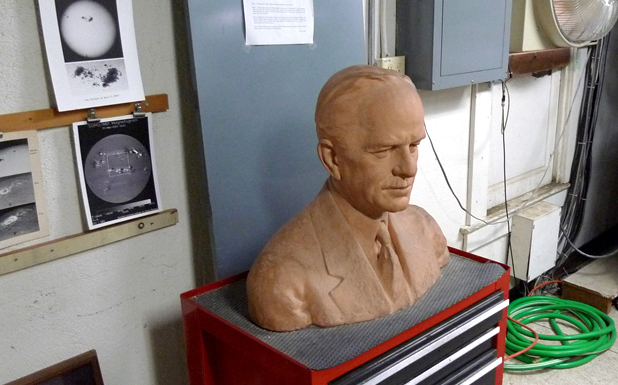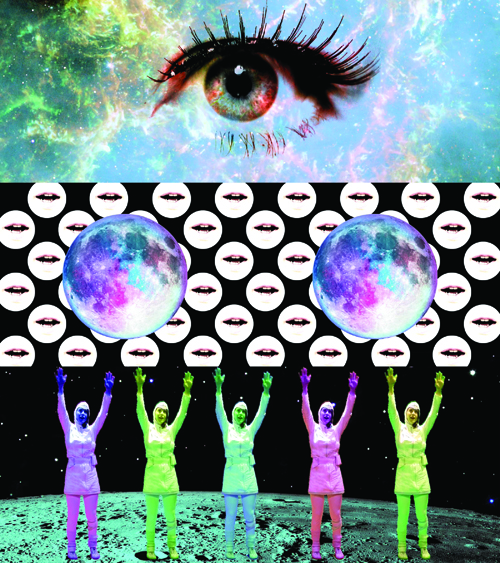For the past couple of months I’ve been watching as my life partner, Christina Ondrus, embarks on a massive artistic, spiritual, and logistical undertaking. Christina is the Founder/Director and co-curator of KNOWLEDGES, a non-profit arts organization that she runs with Associate Director and co-curator Elleni Sclavenitis. I wanted to wrap up my Guest Blogging stint with some thoughts regarding their upcoming event KNOWLEDGES at the Mount Wilson Observatory, which will be held June 23rd and 24th. The event is free and open to the public. For more information and to donate or volunteer, visit theknowledges.org.
Space exploration was once a reliable source of national pride. Enormous resources were poured into the study of the heavens. Today, our country is mired in massive debt and draining colonial wars, with little moral support for government spending on the development of anything but outright weapons, military subcontractors and invasive body scanners. The U.S. government is gradually extricating itself from the business of exploring the heavens, just as it has washed its hands of developing the country’s art. I don’t mean to infer our government will not continue to explore and exploit the entire known universe in order to figure out creative ways to kill people, retain supremacy, and maybe control the weather, but the whole thing doesn’t really grab people’s imaginations like it used to.
Today’s frontier is cyberspace, a human-generated thought cloud of neurotic dark matter that permeates all interpersonal communication. The seeming infinitudes of outer space are too vast and impractical for us to think about. Better to colonize the digital wilds of personal information and cultivate them to yield money.

Mt. Wilson Observatory as photographed by the Observatory's live towercam.
In this smartphone-hampered context, The Mount Wilson Observatory stands as a temple of a bygone era of scientific advancement. It’s a pre-digital site of immense scientific significance. The 100-inch telescope built on the site in 1911 held the title of largest telescope on Earth for a solid 30 years. Edwin Hubble used this telescope when discovering the general expansion of the universe. The telescope’s mirror was the largest in the world and was crafted over the course of six years by a team of French artisanal glassmakers. The looming domes of the telescopes evoke cathedrals. On Mount Wilson you may hear contemporary, digital-based telescopes dismissed as “light collecting buckets.”
There is a dignity about the place, a sense of the value of craft and the import of preservation. Is it any wonder, then, that this place would appeal to a community of contemporary Los Angeles artists, who see these values receding from their own institutions?
It was this literal and figurative rarefied air of Mount Wilson that led Christina Ondrus to consider the grounds for a show of site-specific artwork. The disastrous Station Fire of 2009 threatened the existence of the Observatory itself, but this only heightened the sense of its priceless historic value and steeled Ondrus’ resolve to make something happen there. In 2011, she teamed up with Elleni Sclavenitis and together they co-curated KNOWLEDGES at Mount Wilson. Since then, an impressive assortment of established and emerging artists, writers, musicians, and performers have been brought on board, representing a broad array of responses to the site and its many implications.

Installation by Katie Grinnan for "Crescent City" at Atwater Crossing, 2012.
Katie Grinnan plans to create an Astrology Orchestra which includes ten unique planetary instruments, tuned to the frequency of planetary spin.
The multimedia collective Cloud Eye Control will perform “Final Space,” which will employ puppetry, optical illusions, performance and video to tell the story of “a woman who abandons her oppressive technological world, only to land on an inhospitable moon landscape.”
There will be a screening of James Benning’s Nightfall, “a study of real-time light changing from day to night” filmed in a California forest, concurrent with the actual transition from day to night in the midst of a California forest.

Sneaky Snake. "Imaginary Landscapes" CDR with unique collage covers - edition of 50. Self-released.
The experimental ambient duo Sneaky Snake will create sounds “whose explicit purpose is the creation of altered states and well-being within the viewer/listener” during a Night Time Viewing event in the Hale 60 Inch Telescope. Many other artist are participating, and details can be found on the Knowledges website.

Christina Ondrus. "All Encompassing (Cosmos & Psyche)," 2010
Beyond politics, astronomers and artists are people who do what they do for their own reasons. They are people concerned with looking, concerned with listening, concerned with observations and recordings. Telescopes are simply devices meant to magnify what you can see. The technology creates its own interpretive vocabulary, and though these technologies and vocabularies are no longer new to us, they are still useful. The Mt. Wilson Solar Tower continues to use decades-old equipment to record and print images of sunspots.
A painter knows as well as any astronomer that an image does not cease to contain value simply because the methods of its creation are considered obsolete. Science and art, so often preoccupied with being at the vanguard of culture and thought, can also find a mutual ground where both recognize they are only as powerful as the limits of human perception. As our age becomes increasingly digitized, concerned with 1’s, 0’s, and conveying it all in 124 characters, Mt. Wilson’s battery operated, analog behemoths with their eyes pointed at the sky remind artists that in some sense vision itself is tactile, and that there’s much to learn from the allegedly obsolete.






